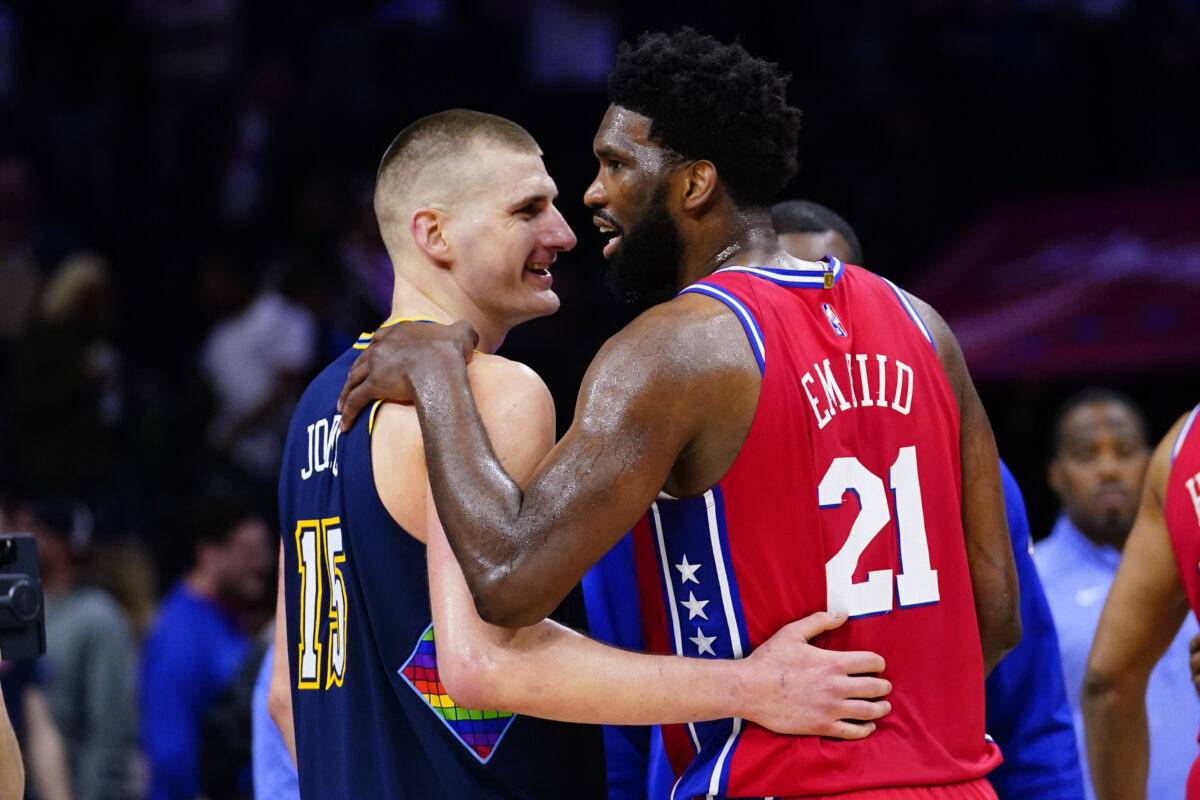There is no shortage of people who think Philadelphia 76ers big man Joel Embiid should have won the NBA’s MVP award over Nikola Jokic. So the outcry after his All-NBA Second Team selection was more than expected.
The league’s ancient position-based voting still only allows for one center per team, so Jokic’s first team selection relegated Embiid to the second team. That an MVP finalist, the runner-up even, isn’t one of the five players on a team used as an indicator of the best in a season is as silly as people say it is. However, it isn’t exactly a new issue, and it hasn’t been the snub people make it out to be.
So based on the math here, it appears Embiid got 12 first-team votes at center, plus an additional 45 as a forward, unless I'm missing something. So there was definitely an attempt to get him on First Team. So, he got more points than Tatum (last forward in) but less as a forward pic.twitter.com/Afzlre6jd8
— Kyle Neubeck (@KyleNeubeck) May 25, 2022
Since the NBA-ABA merger in 1976, centers finished one-two in MVP voting three times prior to Jokic and Embiid the past two years. Each time, the runner-up ended up on the All-NBA Second Team. Today, all three of those second-team players are in the Basketball Hall of Fame. Bill Walton was a runner-up to Kareem Abdul-Jabbar in 1977, David Robinson to Hakeem Olajuwon in 1994 and Shaquille O’Neal to Robinson the following year.
Of course, all of those players have first team selections to their names too. But those second team finishes likely make them appreciate it just a little more when they could definitively say they were the best center in the league. It’s all the sweeter for someone like Shaq to finally make the first team after only second- and third-team selections through the first five years of his career.
Nevertheless, which team a player makes hardly matters in legacy conversation as much as people make it out. The top of Shaq’s Basketball-Reference page says “14-time All-NBA,” not eight-time First Team, two-time Second Team and four-time Third Team. As far as anyone is concerned with Embiid, he’s now a four-time All-NBA player.
This isn’t to say the NBA shouldn’t update a system that’s clearly outdated, but the biggest problem with All-NBA voting is that the teams are tied to contract incentives. The extension Embiid signed in 2018 paid him 25% of Philadelphia’s cap but had a clause that if he made First Team All-NBA, the deal would bump up to 30%. He was unable to make that happen before signing a supermax extension last summer that’s also tied to All-NBA selections. This is where the real problem lies.
Centers are still limited to one per All-NBA team, which means that while six guards and six forwards are named to All-NBA teams each year, only three centers are. The restriction puts a limit on how many players at the position can be in the conversation for max money. This year it was Embiid, Jokic and Karl-Anthony Towns. That means players like Rudy Gobert and Bam Adebayo missed out. Maybe they would have even if voting was position-less, but we’ll never know with the way things are now. That’s the biggest reason the NBA has to change the way All-NBA teams are picked.
[mm-video type=video id=01g3w5h1arv867b2tyye playlist_id=none player_id=none image=https://images2.minutemediacdn.com/image/upload/video/thumbnail/mmplus/01g3w5h1arv867b2tyye/01g3w5h1arv867b2tyye-7d461a9414d2099118d0f477b57bc9f0.jpg]
[listicle id=1901264]
